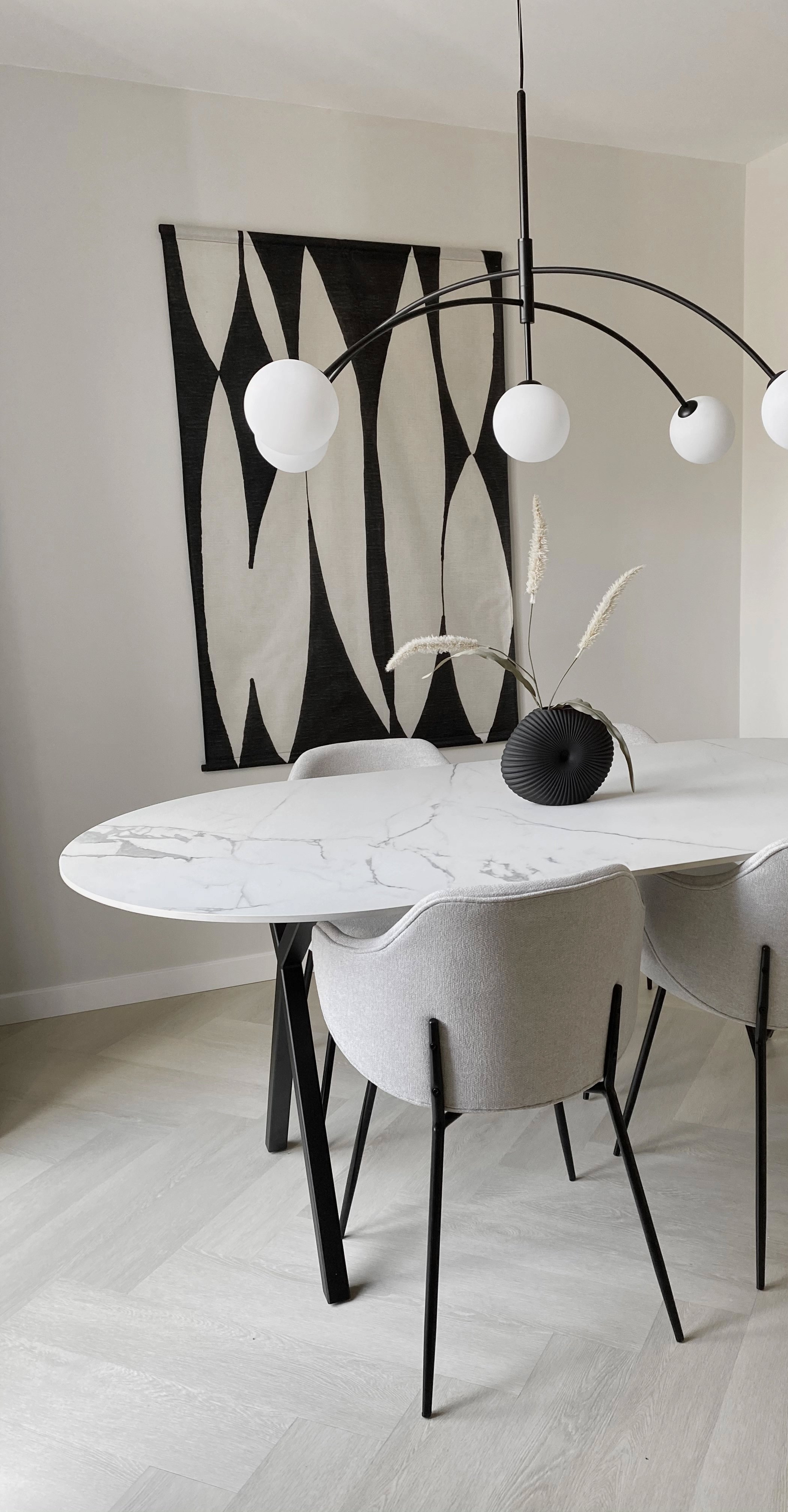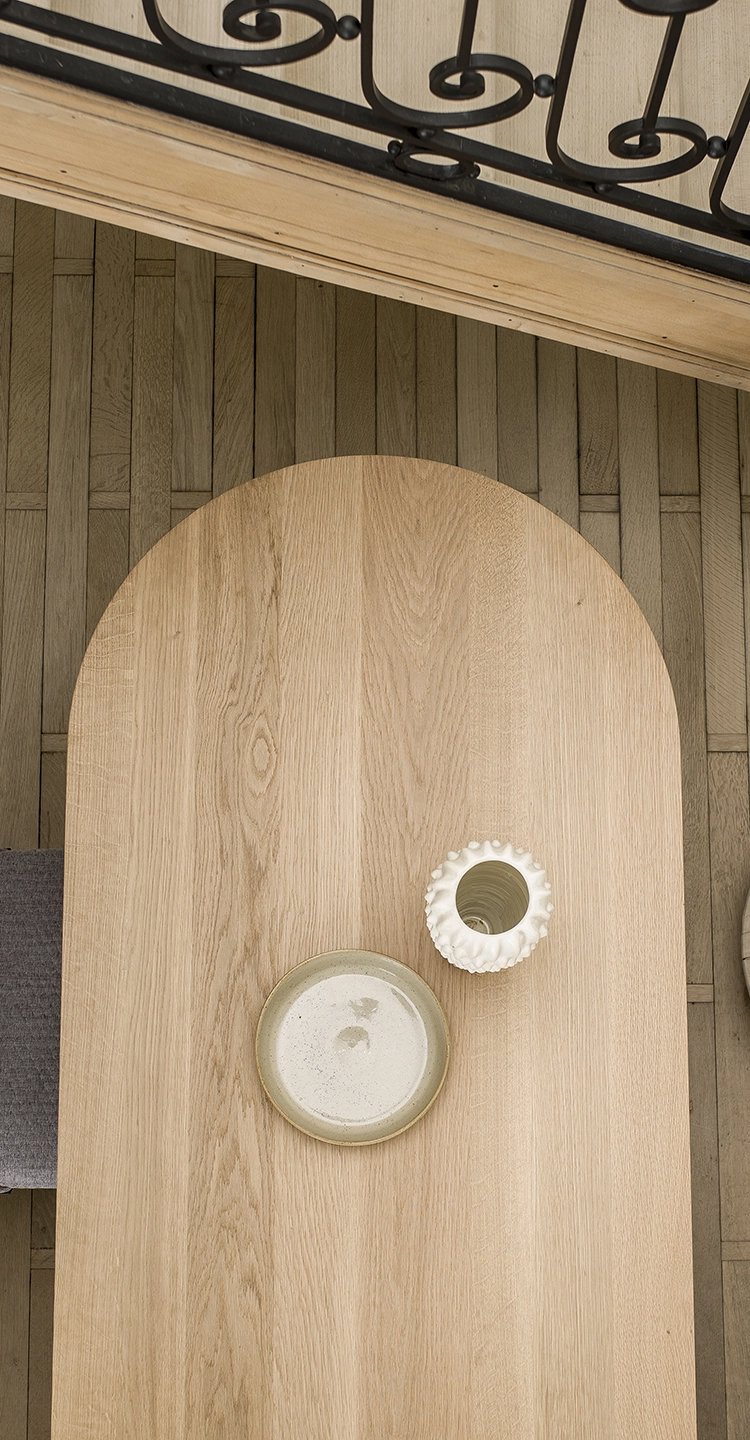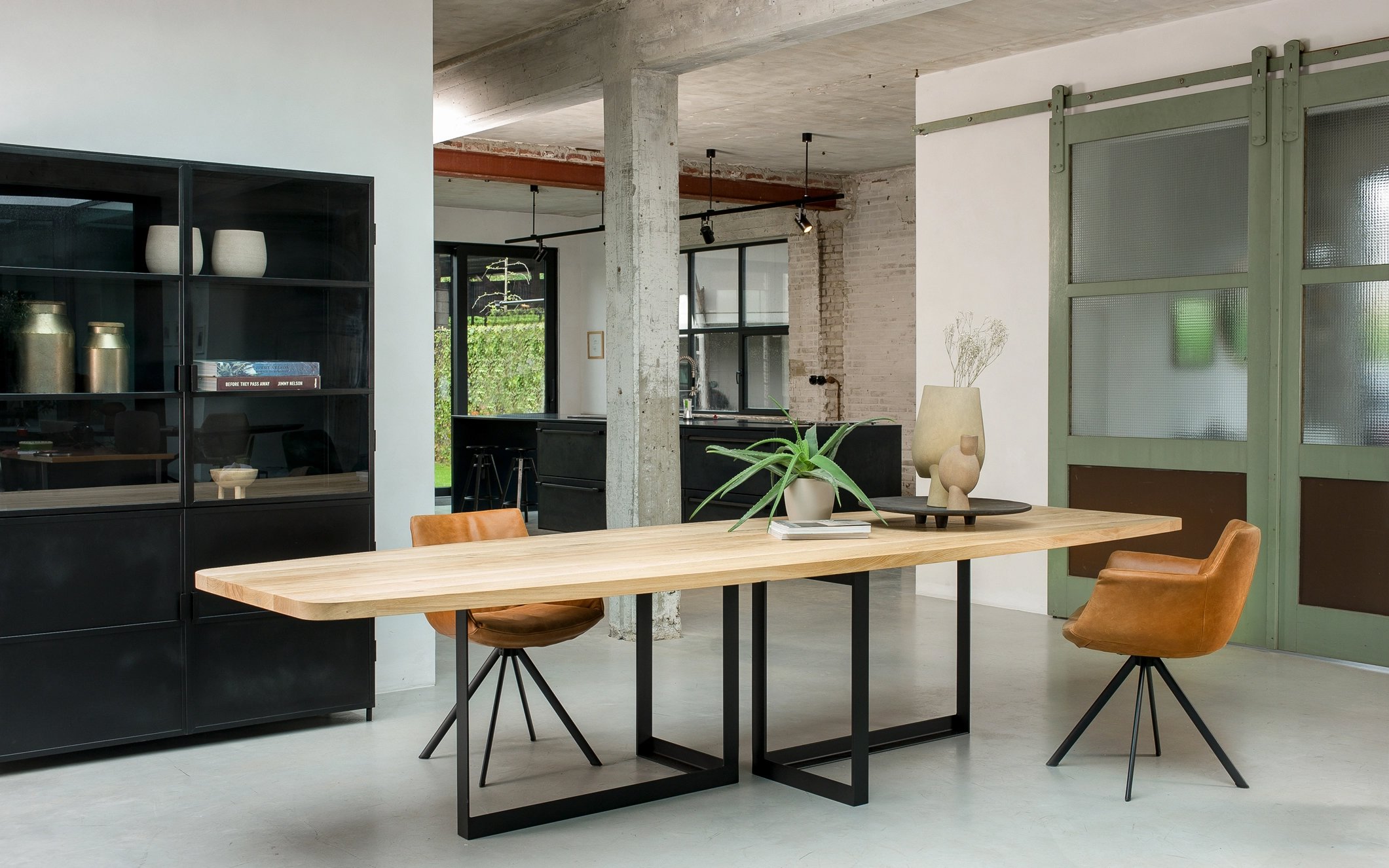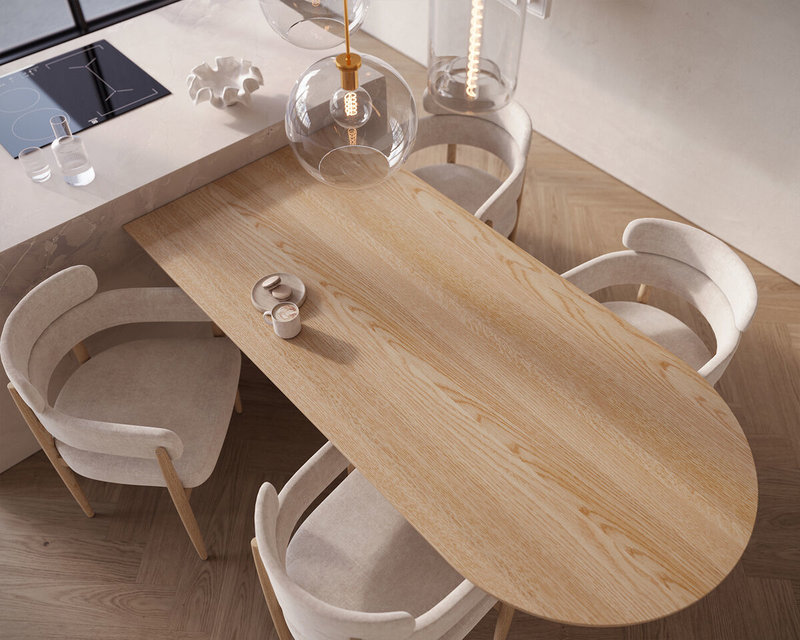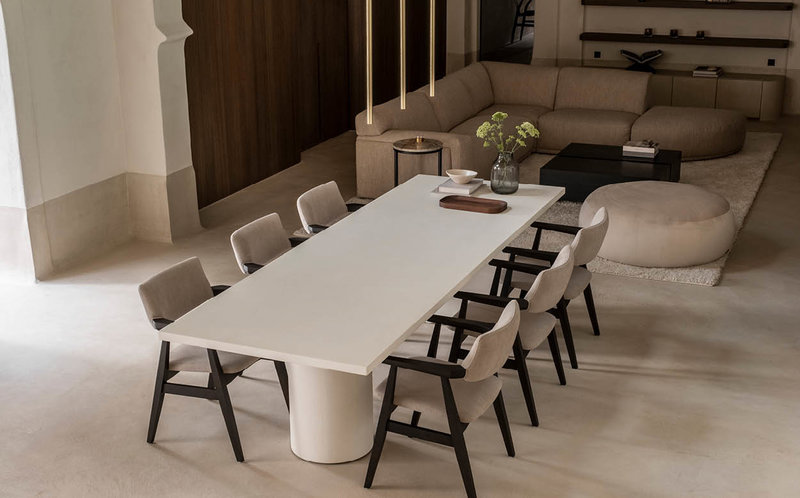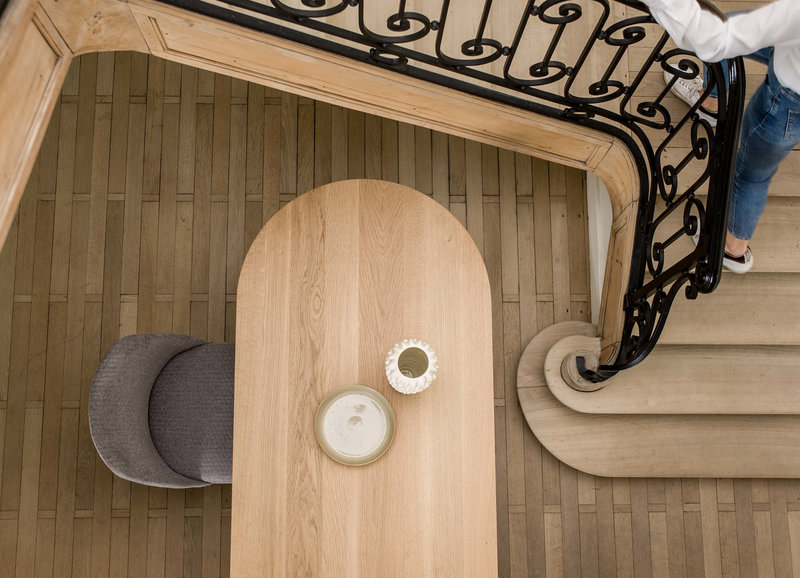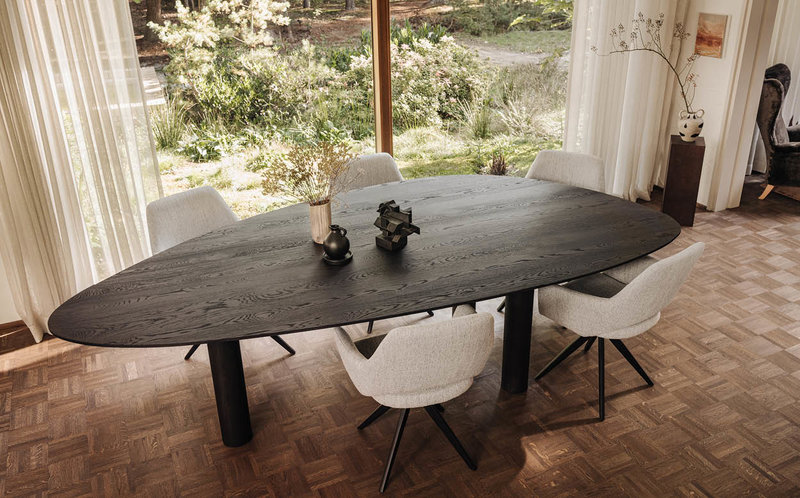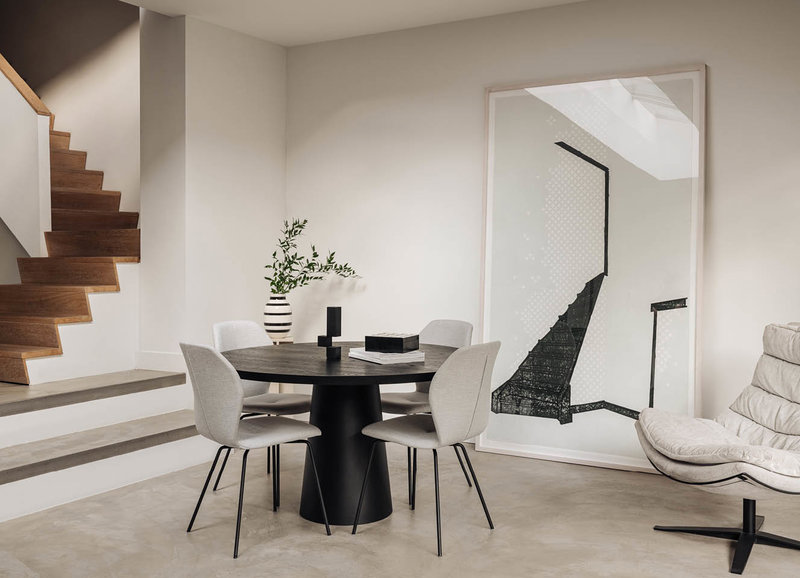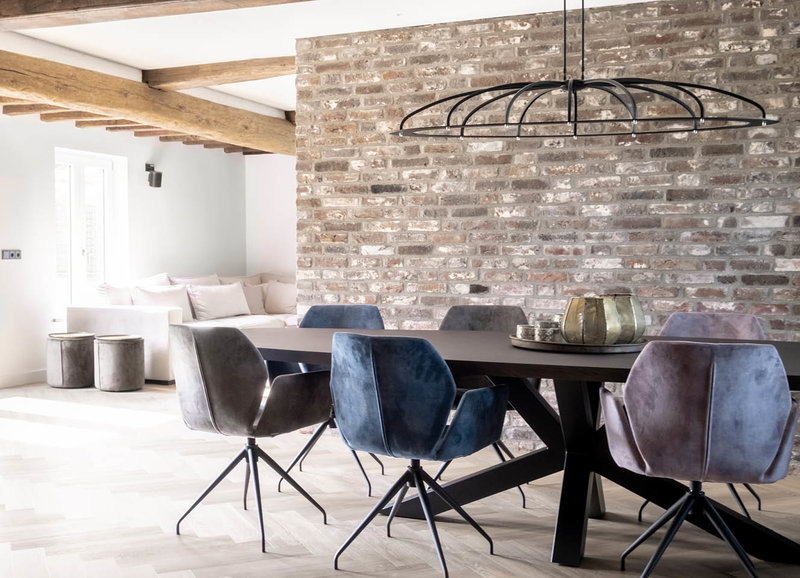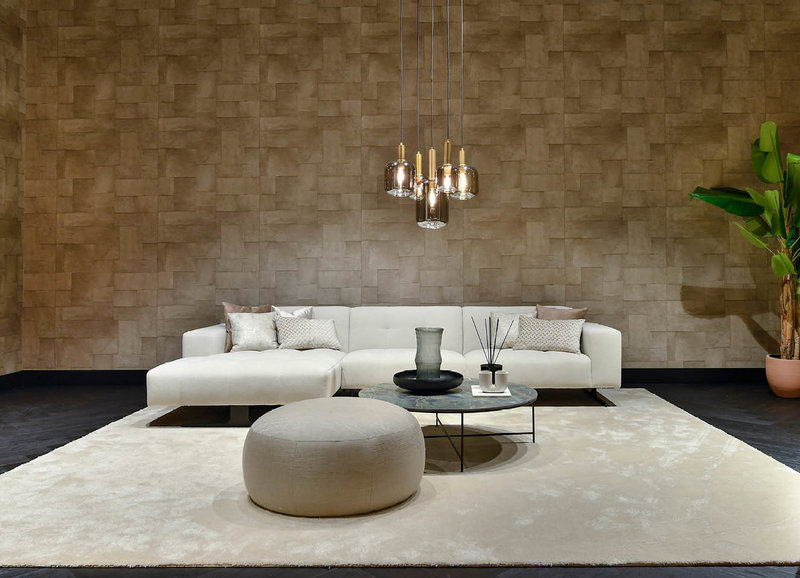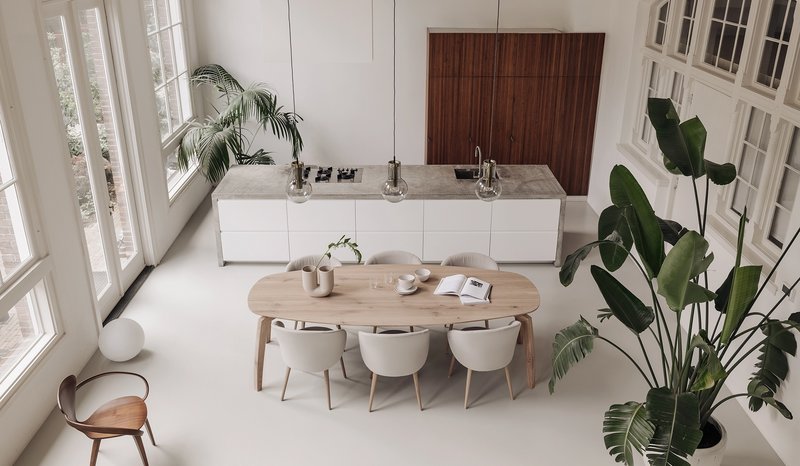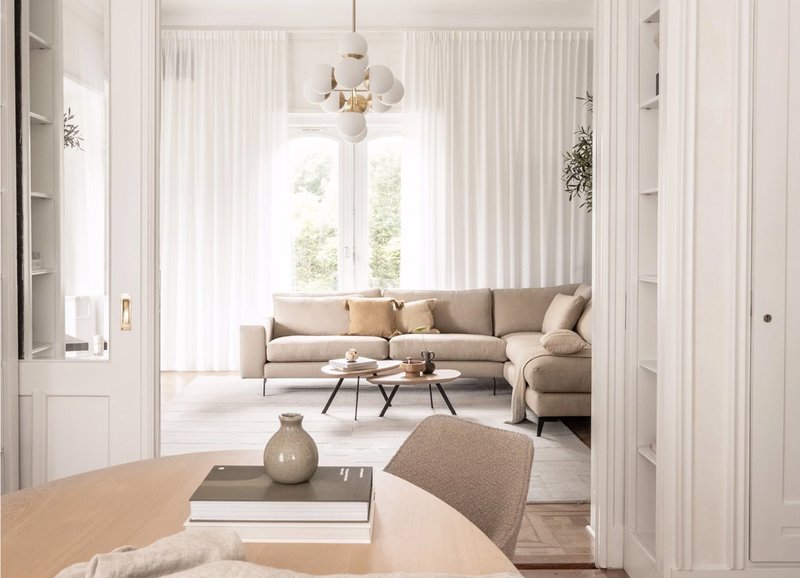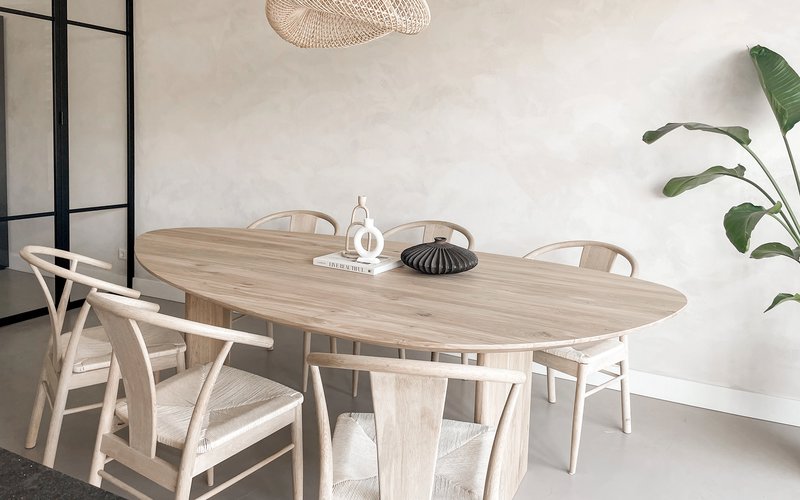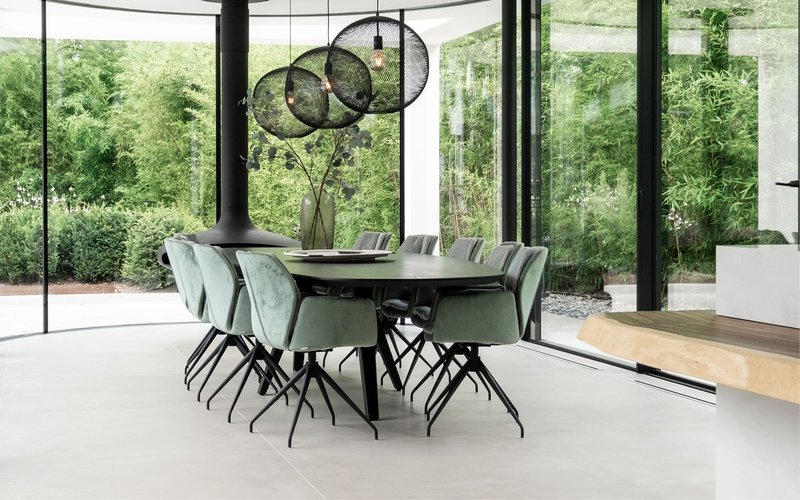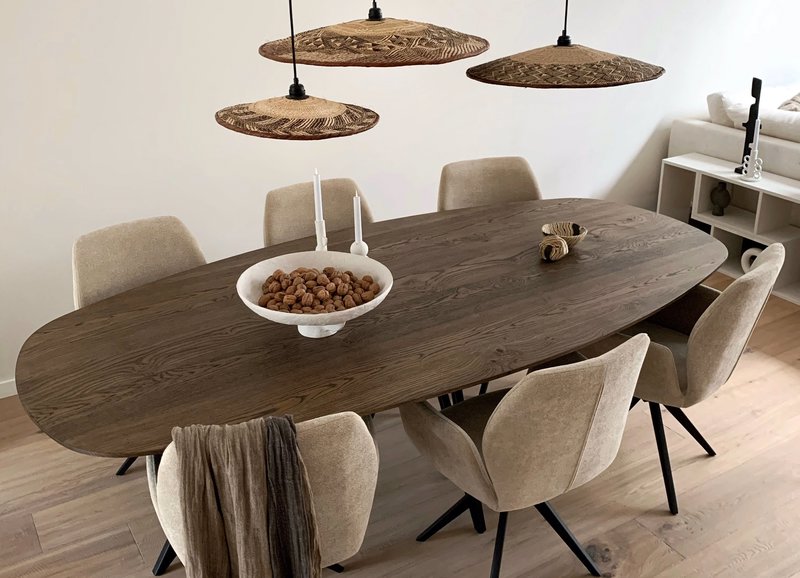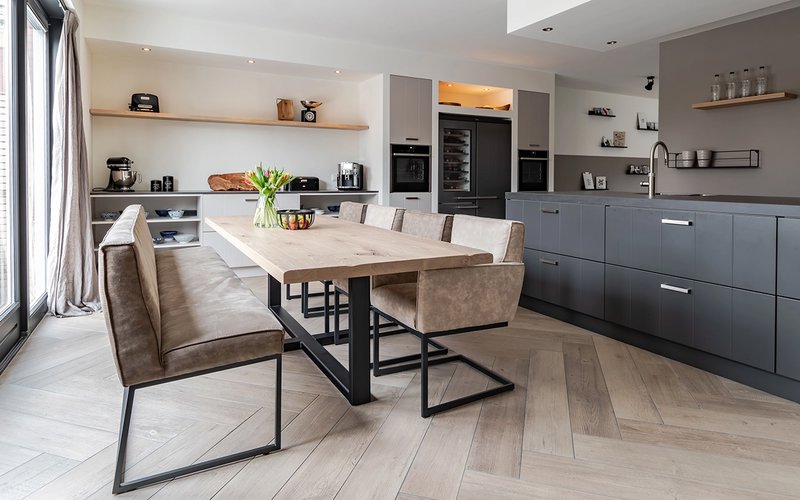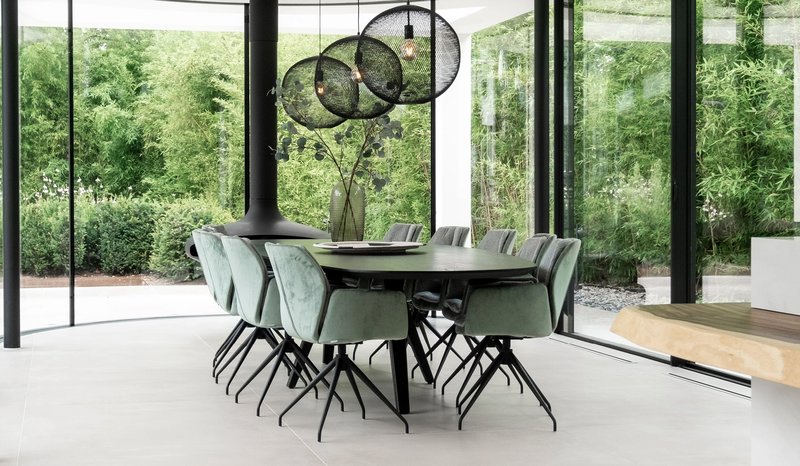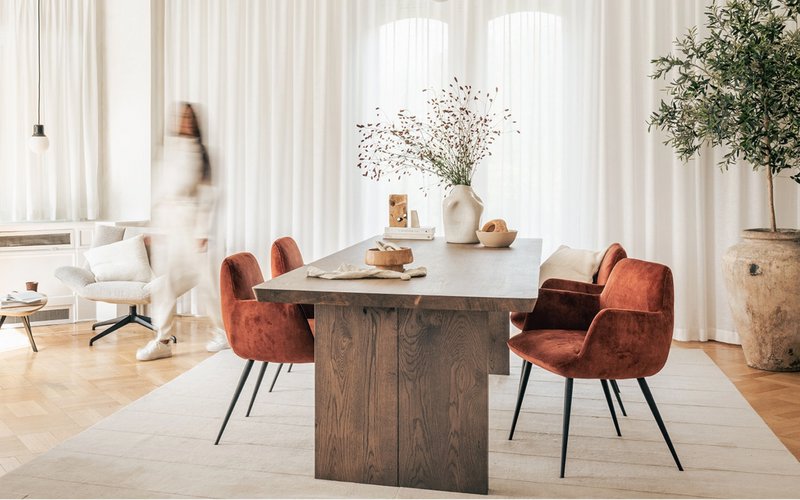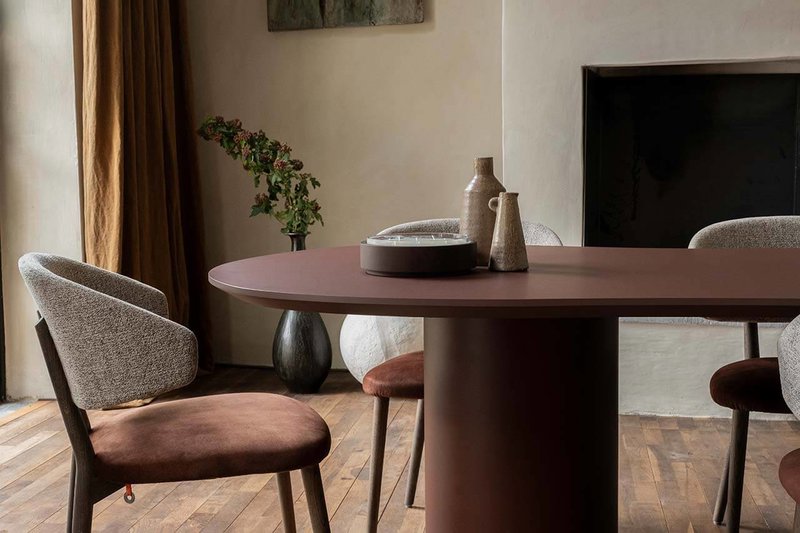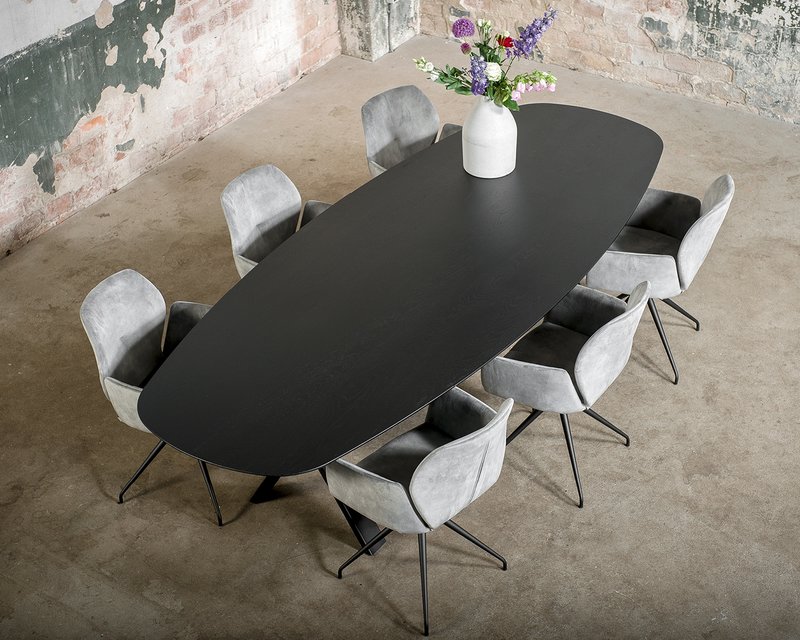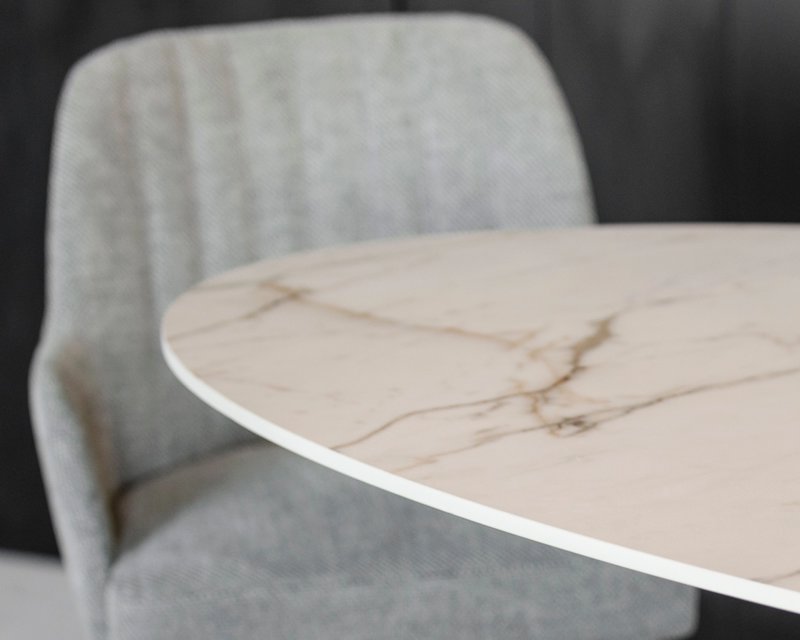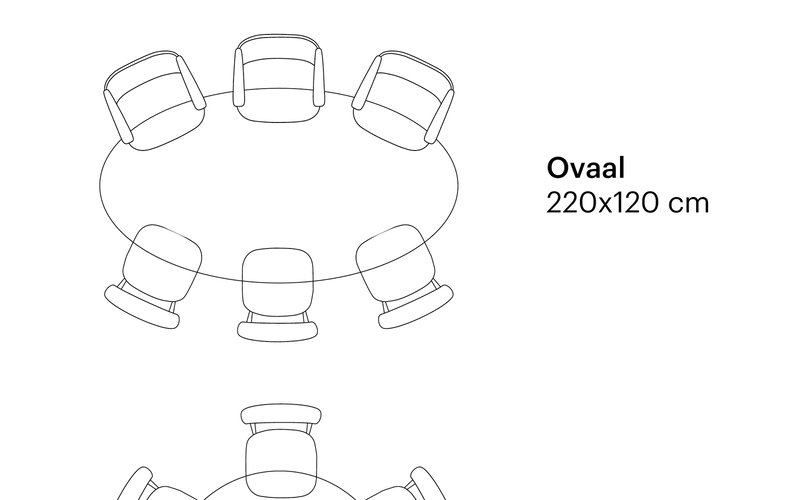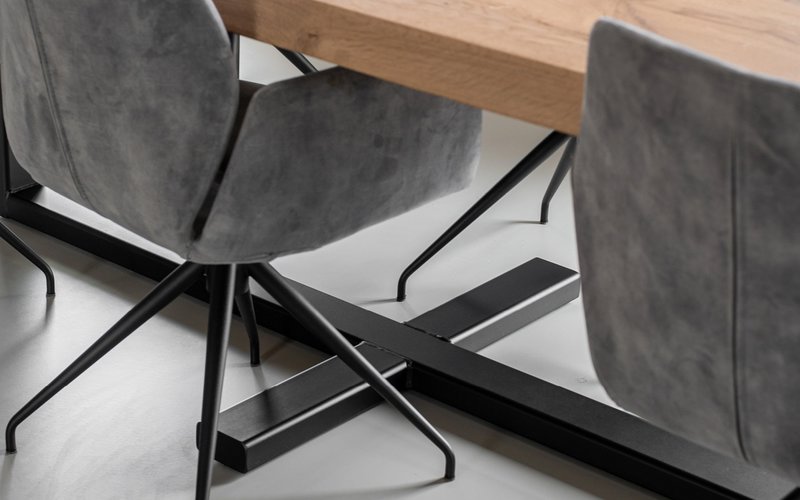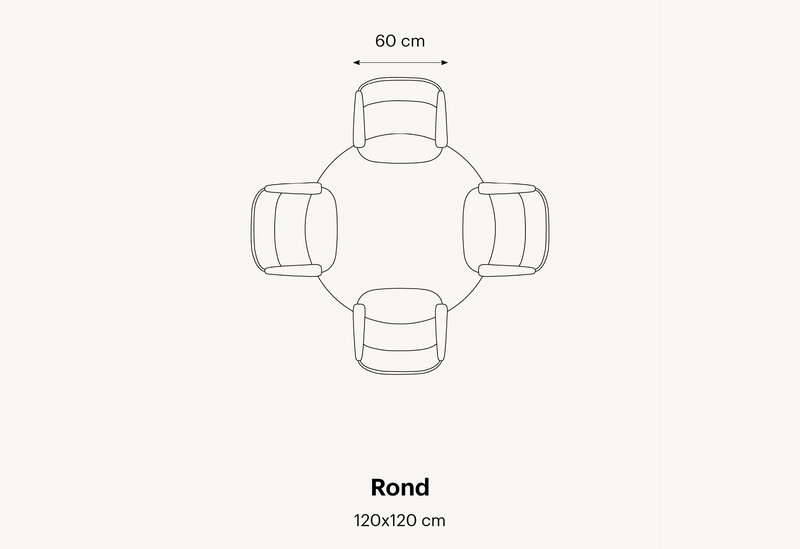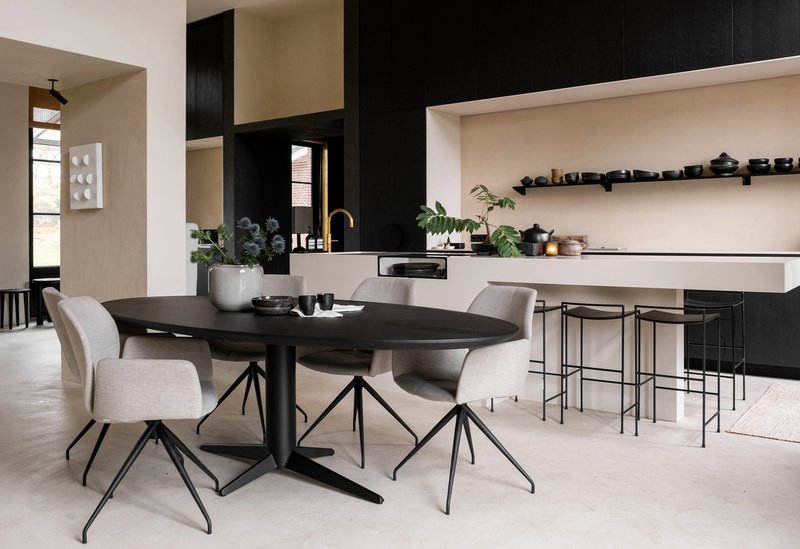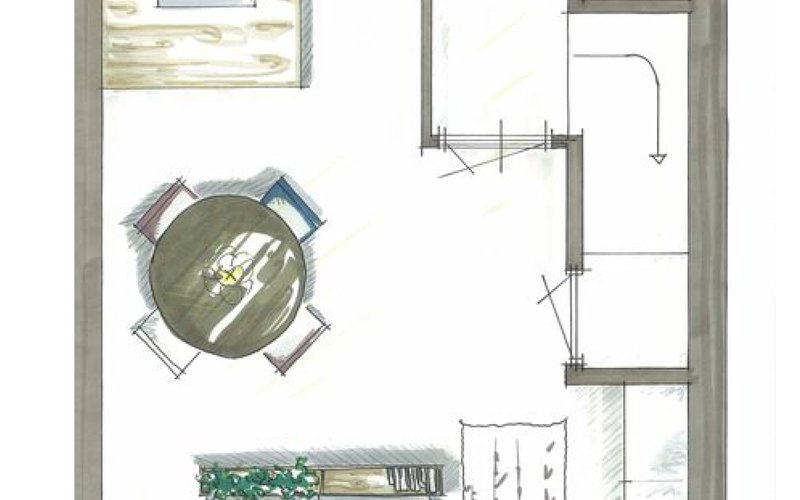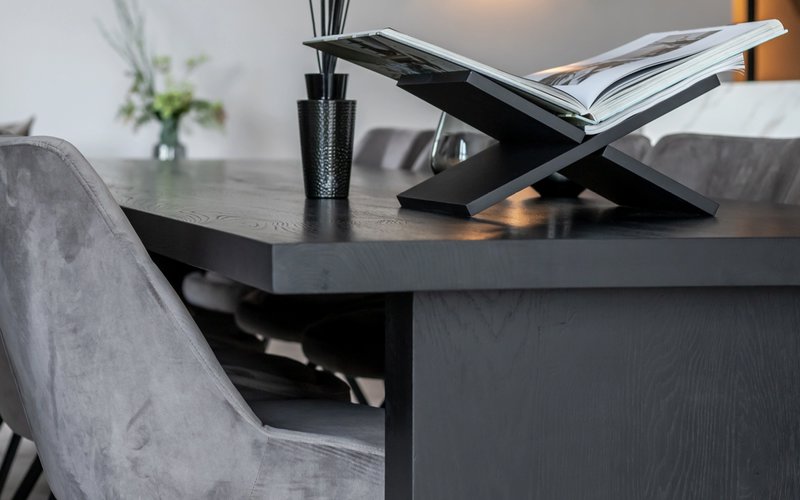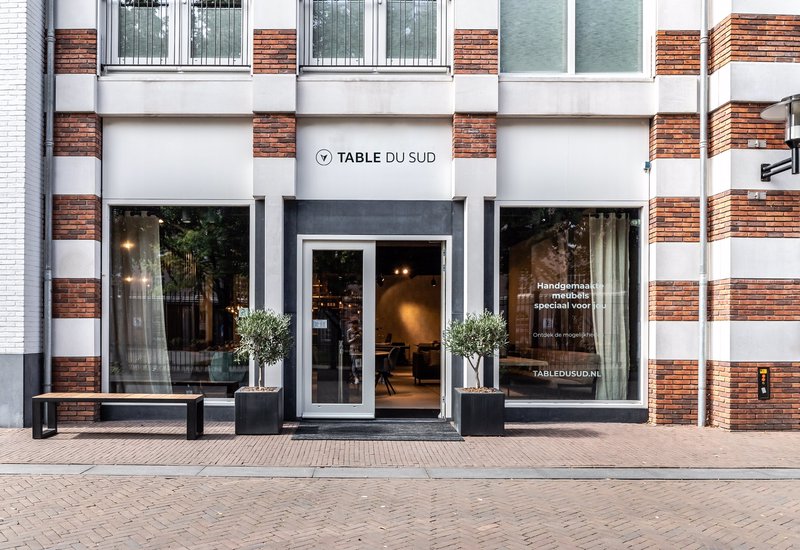Looking for oval? These are our 4 options!
Learn all the ins & outs in a matter of minutes
Oval tabletops are very popular at the moment and not without reason. In addition to being “something different”, this shape has many advantages. But did you know there are four different shapes to choose from once you've decided on an oval dining table? That’s the advantage of having your own workshop!
To inspire you, we have listed them for you in this blog. Who knows, maybe your new favourite shape is among them! Spoiler: an oval table functions as a breaker of straight lines in your interior and so provides a welcome variety.
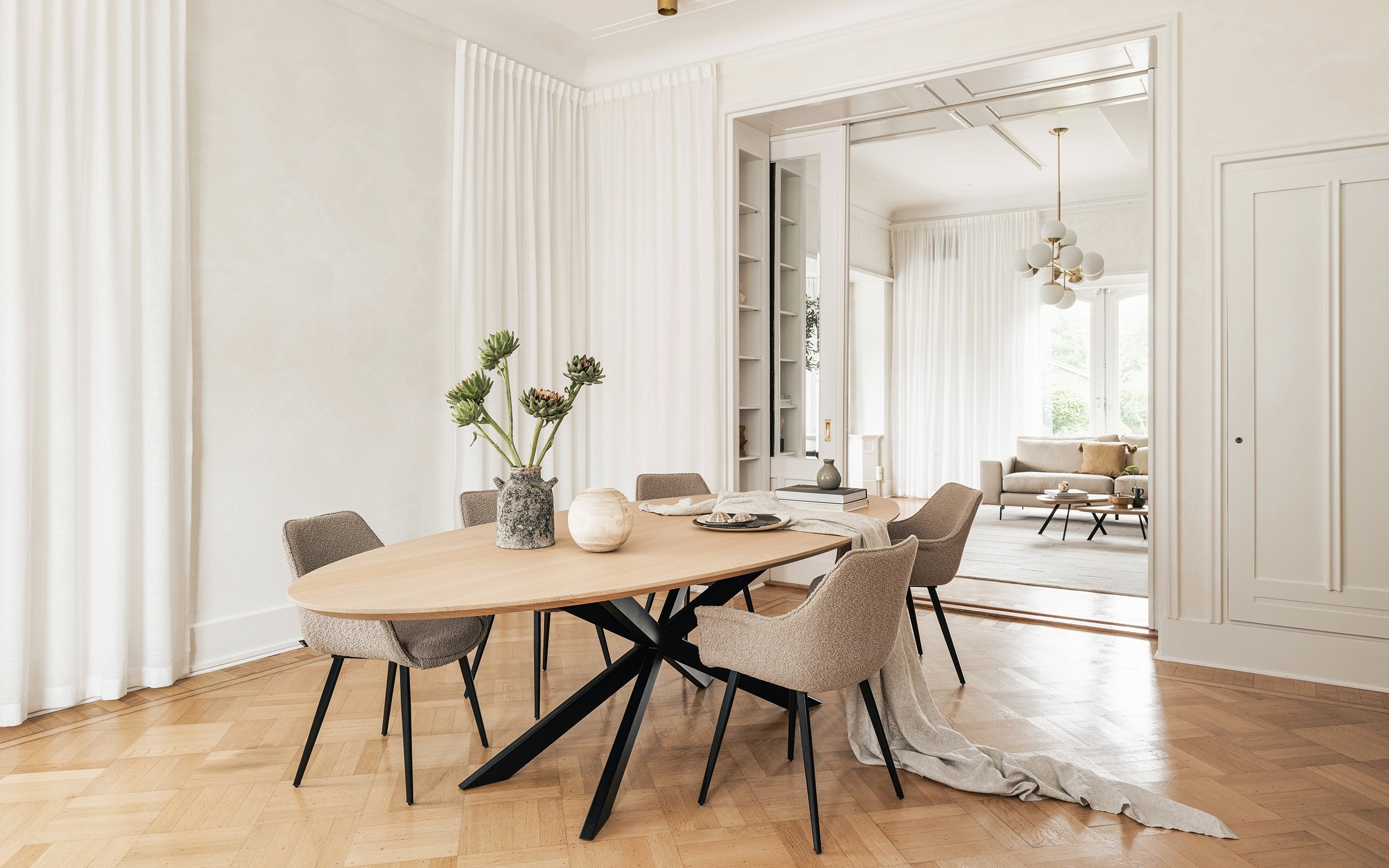

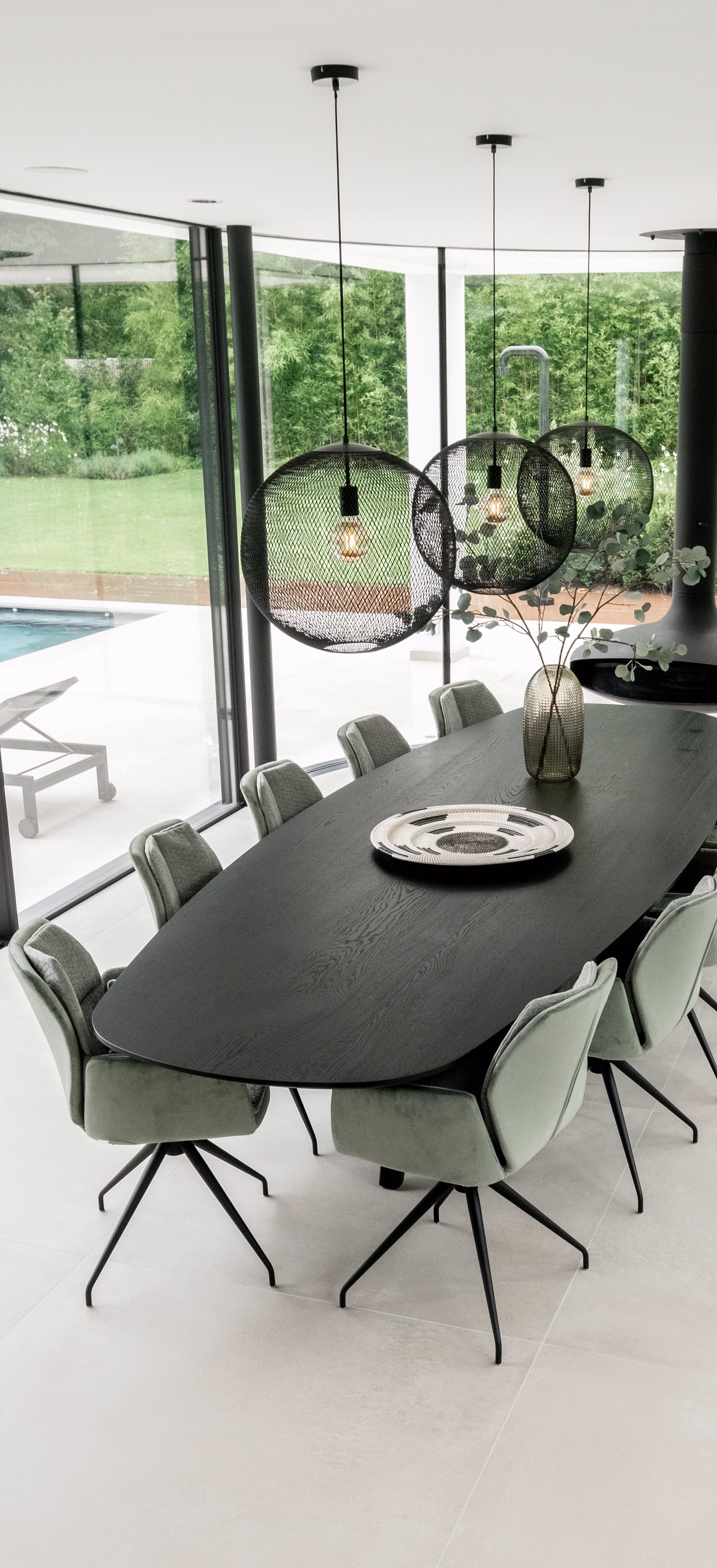
Standard oval
The most classic shape you can choose is by default oval. That doesn’t mean there’s nothing left to choose if you go oval, on the contrary! You decide how slim or round the shape is and consequently also how “pointy” the head side is. It’s smart to take legroom into account at the head sides, as that can be a bit scarce with the narrower tables. In addition, oval tables are cosier because they generally lend themselves better to table conversations. Another advantage is that the shape is more practical when dealing with passage space.
Good to know: the oval shape looks the part but is of course a bit smaller than the tabletop of a rectangular table. Try to bear this in mind as much as possible when you determine a final size. A common choice is an oval table in a slightly larger size. Looking for advice? Discover our cutting patterns. Example of a standard oval table: Oak oval dining table Gap.
Danish oval
One of our hobby horses of the moment: Danish oval. Danish oval is based on a classic oval shape but with a surprising twist. This tabletop remains wide a little longer and then “suddenly” makes a sharp turn inwards, creating an extra seat, as it were. A very practical shape! When composing a Danish oval dining table, you decide the length and the width of the middle. Example: Danish oval dining table Lachaud.
Semi-oval
A table that’s almost rectangular looking but really still is oval. If that's your goal, you'll find exactly what you're looking for in semi-oval! You choose the length, width, and head size yourself. For semi-oval this also means that you pick the curvature of the edge yourself. This means that with a smaller difference in table width, the curvature will be a lot more subtle than with a larger width difference. We advise you to add a radius on the corners so they are finished nicely. Choose from a radius of 35 mm, 60 mm or 100 mm. Example: Semi-oval oak dining table Marly.
Semicircle
A rectangular table with two semicircles at the end, that’s how you describe the semicircle table. The length of the table is straight as an arrow, but the ends are convex. The width you choose is therefore also the diameter of that semicircle. It’s best to place the chairs on the straight part of the table. Example: a table with a length of 280 cm has a straight line of 190 cm. So 2 x 45 cm is deducted for the semicircles. Would a picture help your imagination? Then take a look at the semicircle oak dining table. The semicircle is perfect if you have ample room for the length, but not so much for the full width. A win-win if you like round shapes at home!
Extra tips
Choosing a new dining table is not something you do overnight. We’re here for inspiration, so that you’re able to make a choice that really makes you happy. Unsure about the dimensions of your new table? Read our blog about the ideal number of chairs at the table. In addition, we have designed something useful that allows you to look at how a (Danish) oval table appears in a home of peace and quiet. This way you can easily match the size with the rest of your furnishing. Also check out our special cutting pattern for even more help.
